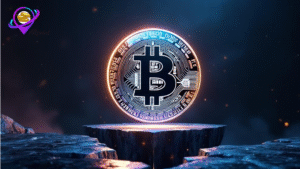TAPEDRIVE Takes Top Prize at Solana Hackathon With a Fix for Costly Data Storage
The latest Colosseum hackathon—a well-known event that started as a Solana Labs spin-off—just wrapped up, and the big winner was TAPEDRIVE. If you’re not familiar, Colosseum has become something of a barometer for what developers on Solana are tinkering with. This time, stablecoins seemed to be everywhere, according to one organizer. But the project that stood out tackled a less flashy, more persistent issue: the high cost of storing data on Solana.
And let’s be honest, that’s a real problem. Solana’s blockchain is *busy*. With so much happening onchain and blocks flying by in seconds, storing data isn’t cheap. Even Solana co-founder Anatoly Yakovenko has talked about the need to trim down storage overhead. TAPEDRIVE’s solution? They claim to slash the cost of reading or writing data by a staggering 1,400 times compared to Solana’s current setup.
How It Works—and Why It Matters
The idea isn’t exactly simple, but here’s the gist: TAPEDRIVE bundles data together and attaches cheaper cryptographic proofs to the blockchain. A network of miners, incentivized by the TAPE token, stores this data. To earn rewards, those miners solve storage challenges every minute—proving they’re actually holding onto their assigned chunks of data. It’s a bit like a decentralized filing system, but one that still leans on Solana’s proof-of-stake for security.
If that sounds familiar, it might be because the first Colosseum winner, ORE, had a similar rhythm. ORE was a proof-of-work game where miners solved puzzles every minute. Maybe there’s something in the water—or maybe Solana builders just like projects with a steady, clockwork heartbeat.
What’s Next for TAPEDRIVE?
Right now, it’s hard to say whether this will actually catch on. Solana’s ecosystem moves fast, and not every hackathon darling becomes a mainstay. But if TAPEDRIVE delivers on its promise, it could ease a real pain point for developers. Storing data cheaply matters, especially for apps that need to handle tons of transactions without burning through budgets.
Then again, incentives have to align just right. Miners need a reason to stick around, and the system has to stay secure. It’s one thing to win a hackathon; it’s another to survive in the wild. Still, it’s worth keeping an eye on. After all, the best solutions often come from fixing the unsexy problems—not chasing the next big trend.
*This is a segment from the Lightspeed newsletter. To read full editions, subscribe.*






